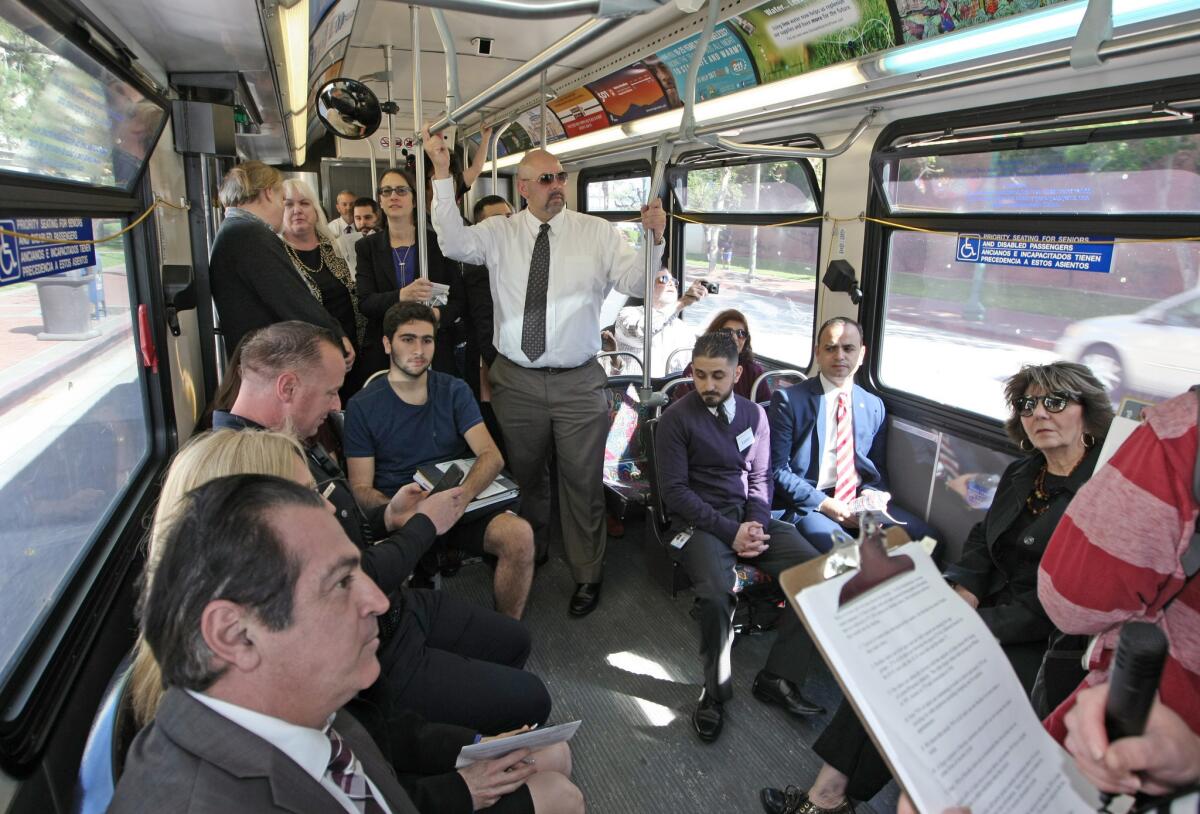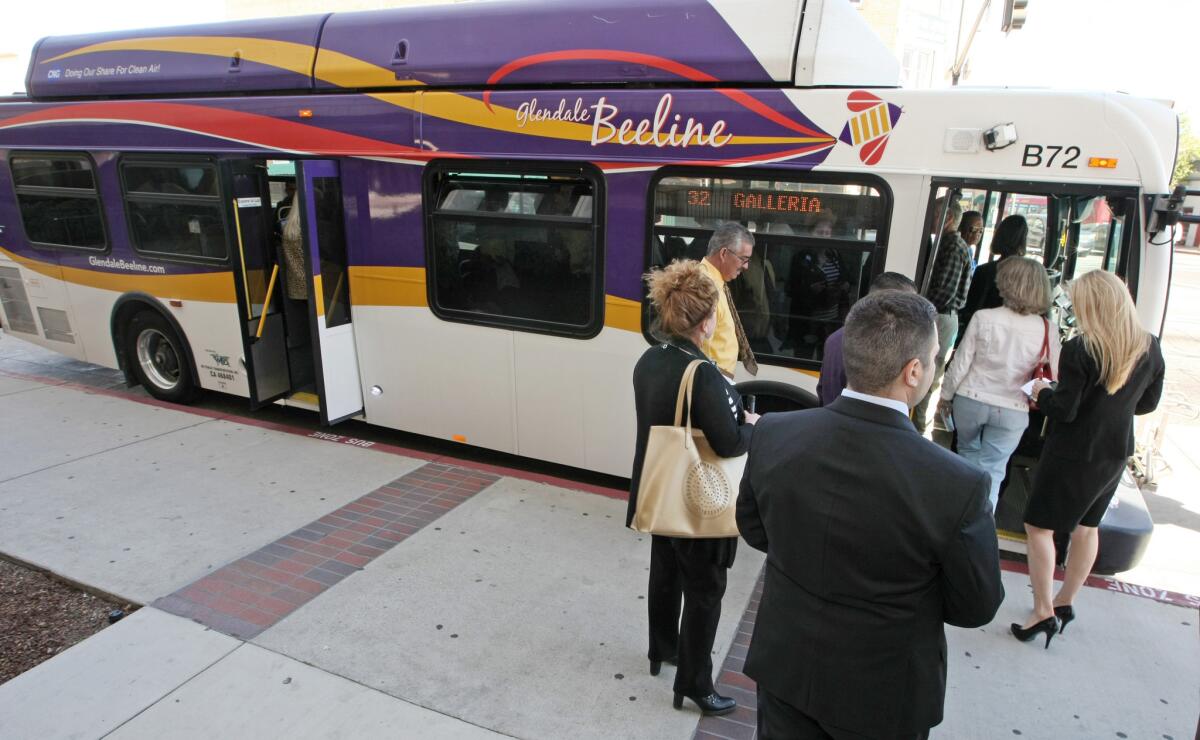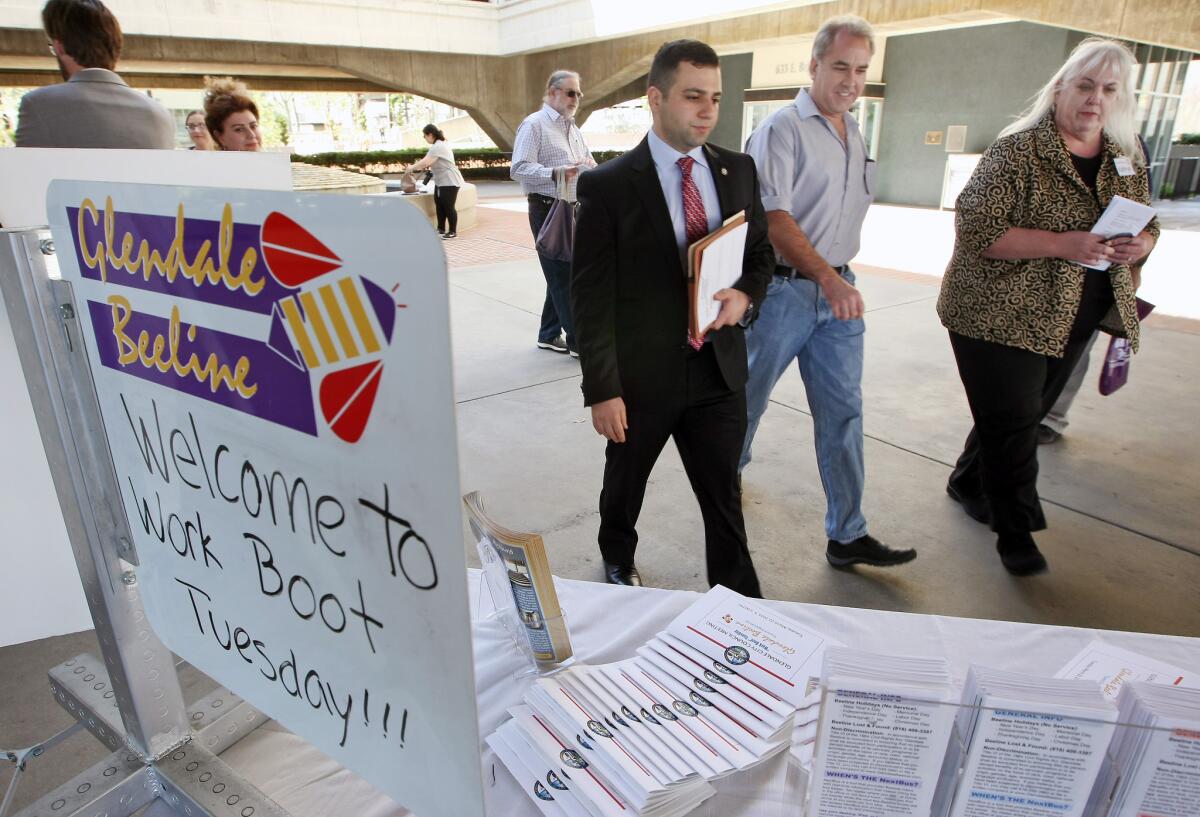Glendale City Council, residents take the bus to ‘Workboot’

The Glendale City Council, city employees and residents take a bus ride as part the latest workboot meeting involving a tour of the Beeline bus system on Tuesday, March 22, 2016.
- Share via
A Glendale City Council meeting was held aboard a Beeline bus on Tuesday to give the community a behind-the-scenes look at what makes the wheels go round.
The gathering was the latest “Workboot” gathering to educate residents about different departments and utilities crucial to the city.
Getting on and off at various stops with tokens in hand, those who attended were presented with many details of the inner workings of the 37 Beeline vehicles.
Each bus can hold a maximum of 78 passengers. At any given moment during operating hours between 6 a.m. and 6:30 p.m., 28 buses are in circulation.

But there’s something unique about Glendale’s fleet, said Kathryn Engel, transit manager with the city.
“We’re the first fleet in L.A. County to have total low-floor buses as you board,” she said. “There are no steps at the front door anymore.”
The change makes it easier for seniors and those with disabilities to get on and off the bus, Engel said.
Total annual ridership has remained consistent over the past few years, with 1.7 million taking the Beeline during fiscal year 2013-14 and 1.8 million the last fiscal year, she said.
Statistics show that 37% of the riders take the Beeline to work and back. The most popular destination: Glendale Community College.
During the meeting, Councilwoman Laura Friedman said she’d like to see the Beeline’s hours extended later into the evening, but there’s a bit of a challenge to pursuing that effort.
“If we’re really serious about transit, we need to extend the hours so people can ride it to come downtown and have dinner, have a few drinks, then take the bus home. ... The problem is we can’t run it at night if one or two people ride it,” she said.

Engel said the city does not collect ridership data based on the time of day. However, there is a wish list to expand service if more funding becomes available, she added.
One of the potential sources could be a proposed sales tax at the county level known as Measure R2, which will be on a ballot in November, Engel said.
The Beeline generates $1.1 million in revenue and costs $7 million annually to operate. It is nearly entirely funded by the Metropolitan Transportation Authority — no General Fund money is used.
Jon Kotez is a daily Beeline rider who commutes all the way by train from Laguna Niguel. He works at the IHOP corporate offices and uses the Beeline to get to work from the Larry Zarian Transportation Center. Kotez was on his way home Tuesday when he explained one of the reasons why he’s a returning passenger.
“It’s very well run, always on time and you have the ability to go online and see exactly where the bus is, so you can always get to your bus,” he said. “They’re also very clean.”
One of the stops was at the Larry Zarian Transportation Center, where Metrolink trains pass through.
Alan Loomis, the city’s deputy director of urban design and mobility, said Glendale officials are securing a $1.5-million grant to build way-finding signs that will direct people getting off the train to their Metro transfer buses on Cerritos Avenue and Los Feliz Road.
“When you get off [the train], you’re pretty much on your own,” Loomis said.
A new bus maintenance facility is in the works to be constructed next to the train depot to house the fleet and make repairs, which are typically done overnight, Loomis said.
The maintenance facility would be entirely grant funded, and final plans for the project could head to the City Council for consideration as early as July.
--
Arin Mikailian, arin.mikailian@latimes.com
Twitter: @ArinMikailian
--
ALSO:
Owner of Glendale-based ride-sharing company gets eight years in prison for pair of frauds
Police investigate drive-by shooting in Glendale
Mechanical issues force police helicopter to land at Montrose Community Park
